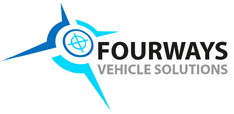Common fleet management terms you need to understand
If you’re just starting out in the world of fleet management or you’re considering expanding your fleet, it can on occasion, be a struggle to understand all the terminology used within the industry.
That’s why this month we wanted to explore some of the common fleet management terms that you might hear in conversation and explain what they actually mean.
This list isn’t extensive, but it does highlight some of the most commonly used terms, especially those that we use in our daily operations.
Commercial Fleet Management
Commercial fleet management gives organisations that regularly rely on transport in their business to minimise or often minimise the risks that come with vehicle investment. It also covers roles that focus on improving fleet efficiency; enhancing productivity and reducing overall fleet costs.
Daily Vehicle Checks
For fleet management companies, daily vehicle checks are a vital component in daily operations, since they ensure that all cars and vans are in optimum driving condition.
The checks are then reported using a check sheet or a daily vehicle defect sheet. Items that are checked include:
- Fuel and oil levels
- Tyre pressure and overall condition
- Wheel nuts
- Mirrors, windows and windscreen
- Indictors, headlights and fog lights
- Brakes and suspension
- Electrical components such as batteries
- Seat belts and additional safety equipment
Early Termination Cost
This applies to vehicles that have been leased for an extended period of time, and will be outlined in the initial contract. Early termination costs are what a business needs to pay if they choose to cancel a lease before the specified end date.
Fair Wear and Tear
When entering in a rental or hire agreement, the contract will highlight that the vehicle should be returned in good condition, with allowances made for fair wear and tear, relative to its age and total mileage. The British Vehicle Rental & Leasing Association (BVRLA) published a guide that most leasing companies use as standard. You can visit the BVRLA website for more information here.
Fleet Asset Register
A Fleet Asset Register is where records of all fleet vehicles are kept. This information includes the type of vehicle, its registration number, the date it was bought into the fleet and when it’s been planned in to replace it.
Fleet managers or higher management can link this information to fleet maintenance schedules and insurance details, so it’s important that all information is up to date and relevant.
Fleet Maintenance Records
Fleet Maintenance Records are the details that are kept on the maintenance schedules, safety inspections, vehicle defect reports and any repairs that have been completed. Ensuring that these records are kept up to date have multiple benefits for businesses.
These include minimising fleet costs through reduced, unplanned vehicle downtime, ensuring warranties are validated and providing legal proof that duty of care standards have been adhered to.
Fuel Management Programme
Organisations that have a structured fuel management programme are able to monitor and potentially reduce their fuel costs across the entire fleet. This is an important aspect of fleet management since fuel prices are in a constant state of flux.
Fleet managers and organisations are able to use this fuel management programme to:
- Monitor driving habits across their fleet
- Implement fuel efficient driving schemes
- Accurately record fuel expenditure
- Review their fuel suppliers
Grey Fleet
The term Grey Fleet covers any vehicle that’s used for business trips, that isn’t owned by the company or a leasing company. Put shortly, it means the personal cars that employees own that they drive for work purposes e.g. visiting clients.
Organisations that have a large grey fleet have to ensure that they are adhering to higher duty of car levels since they have a responsibility to keep their employees safe whilst they’re on the road.
Hybrid Vehicles
A Hybrid Vehicle is one that runs with a combination of electric and traditional fossil fuel. The most common example of a hybrid vehicle would be the Toyota Prius. At lower speeds, the vehicle will only use electric power, but for motorway journeys, the combustion engine will take over. This makes hybrid vehicles most economical for city driving rather than longer commutes.
Infringements
Infringements are actions that a driver takes that go against the fleet policy set out within their company. Examples of infringements can include not completing their mileage claim form, not taking sufficient breaks or completing a tachograph.
It should be the responsibility of a company or a fleet manager to ensure that all drivers are aware of how they can prevent any infringements, whether accidental or deliberate.
Maintenance Service Intervals
These really are as simple as they sound; they’re the intervals between each maintenance service. These are typically set out in the guidelines produced by a vehicle manufacturer.
Residual Value
Residual Value is how much a vehicle will be worth once it comes to the end of its life. For example, a new vehicle may be worth £25,995 when it’s brand new, but when it finally leaves the fleet and is scrapped, it may have a residual value of £2,995.
Salary Sacrifice
Sometimes known as Salary Exchange, Salary Sacrifice is where employees reduce their monthly earnings by a set amount in return for a non-financial benefit. In the fleet industry, the most common example is a car salary sacrifice scheme.
Employees will enter into a salary sacrifice agreement, the amount will be deducted each month and they get to drive a new car. This is a popular choice of perk since employees pay less tax and National Insurance contributions.
Tachograph
These pieces of equipment measure the distance, speed, travel time and periods of rest during a driver’s journey. These are most commonly used in freight vehicles since the driver needs to comply with Driver Hour regulations.
Any vehicle registered after May 1st 2006 that requires a tachograph must be fitted with a digital tachograph, whereas drivers of older vehicles had to manually record their information.
Telematics
In the case of the fleet industry, telematics refers to the data that’s collected whilst a fleet car is on the road. This data is then collected in one central location and used to analyse driving habits, suggest fuel efficient training courses, lower maintenance costs and much more.
It’s an important aspect of a fleet managers role, but it isn’t just applicable to the corporate fleet industry. Utility companies, governments, taxi firms and researchers all use telematics for a variety of purposes.
Vehicle Excise Duty (VED)
VED is the amount of tax that an owner will pay, based on the CO2 emissions and fuel type of their vehicle. For example, the owner of an older, diesel vehicle will pay more VED compared to one that owns a newer, petrol car owner.
Vehicles that don’t have to pay VED are fire engines, ambulances, NHS vehicles and police vehicles.
So there we have it, some of the most common fleet management terms that we get asked about. We hope that you’ve found this article useful and it’s shed some light on the often-complex terminology that surrounds fleet management.
Remember, if you need any further information or would like to speak to us about your own short or long-term vehicle rental needs, then we’re here to help. Simply call our offices on 0344 8000 385 or get in touch with a member of our team here.




